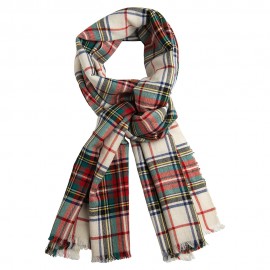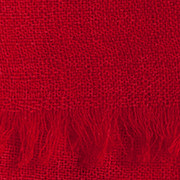No products
Product successfully added to your shopping cart
There are 0 items in your cart. There is 1 item in your cart.
- More Info
 $171.56
$171.56White tartan shawl in cashmere and silk (70 x 200 cm)
White tartan shawl in cashmere and silk.
$171.56
Pashmina guide to your new scarf or stole
At PashminaWear we would like to put you in the best position to evaluate our pashmina scarves and the high quality we are known for. That is why we have written this guide with useful information about cashmere and pashmina.
Have a look at our selection of pashmina scarves and stoles
The purpose with this guide is to answer the many questions about pashmina scarves and stoles you might have. Do you have further questions you are welcome to contact us by email or phone.
What is pashmina?
Pashmina and cashmere are two words for the same thing. Some urban legends say that pashmina is more luxurious than cashmere, but it is not true. In India and Nepal the word for, what we in the Western world know as cashmere, is pashmina. Unfortunately, the term pashmina has become a diluted concept in our part of the world, and often one can find scarves and stoles labeled as 100% pashmina sold for $50 or less on the Internet or local markets, but in reality is made from other materials than wool - even synthetic fibres.
At PashminaWear all our pashmina scarves and stoles are manufactured from pure cashmere. There are different definitions of cashmere. The definition we stick to is that cashmere is optained from the undercoat fibers produced by a cashmere goat with an average diameter below 19 micrometer. All our products are declared in every detail. We can vouch for our products because we are in close contact with our suppliers who are just as passionate about cashmere as we are. In the section about cashmere quality you can learn more about how we declare our products.
Cashmere - the fiber of kings
Cashmere, also known as fiber of kings or Golden Fleece, comes from remote places populated by people with an ancient culture, around which they have built an antique and constantly metamorphosing tradition.
Cashmere comes from the undercoat, or duvet, of the Capra Hircus, originating in the lonely and arduous highlands of Ladakh and Tibet. Nowadays the Cashmere region covers China, Mongolia, India, Pakistan, Afghanistan and Iran, where the Capra Hircus is bred at an altitude of at least 4000 meters. This extraordinary animal has managed to survive in inhospitable habitats, with freezing, windy winters, and hot, dry summers. This harsh environment is why it has developed an undercoat consisting of thousands of particularly fine, smooth, soft and warm fibers, which are concentrated in a small area, under the dense outer coat. Real Cashmere only comes from such fibers, which allow the Capra Hircus to resist temperatures of -40°C.
The undercoat grows until the days get shorter, and stop its growth when the days get longer. For this reason, Cashmere fibers are collected during the molting period, in the spring, when the goats naturally lose their hair.
The fiber collection is the first of several stages of the Cashmere production process. Mongolia and Tibet, which are the sources of the best Cashmere, are the only sources chosen by CASHMERE CULTURE to create its unique, exclusive and comfortable products. In these two places, the fibers are collected by hand with a special comb. In other areas, the animals are mostly shorn. Once the first phase is complete, there is a manual sorting, to separate the coarser hair from the finest ones, and washing to remove dirt, grease and vegetable impurities accumulated during the fiber collection. Subsequently the process continues with the dehairing, which is a meticulous and very important procedure to ensure a high quality raw material. In this step, thin, precious fibers are separated from the bristly, coarse ones of the outer coat. At this time, Cashmere is ready to be transformed into yarn for weaving or knitting.
It is estimated that only 200, 300 grams of duvet are normally acquired from each goat. Furthermore, this amount decreases during the fiber collection and refinement stages.
The complexity of the process, the small volume of material and the distance of the places of origin make the cost of this special, ancient natural fiber high.
In some respects, Cashmere resembles diamonds. In fact, for its classification and beauty, Cashmere is examined for its color, purity, fineness and length. The lighter Cashmere is, without impurities, fine and long, the more it is valuable.
Cashmere capes and scarves were handcrafted in the seventeenth century and were initially brought to England by soldiers of the East India Company. These valuable handcrafted items were hugely successful, and Cashmere products spread first to France and later to all of Western Europe.
Weaving pattern
The weaving pattern is decisive for the appearance of the pashmina scarf. At PashminaWear we have four different veawing patterns. Twill pattern with the classic diagonal rib, diamond pattern with the beautiful squares and the super simple basket weave where the cashmere threads are woven like a basket. Jacquard weave with the unique and beautiful patterns is a classic that is perfect for formal or wedding dress.
| Twill weave | Diamond weave | Basket weave | Jacquard weave |
 |  |  |  |
Cashmere quality
The quality of cashmere primarily depends on three measures:
- The thickness of the cashmere fibers
- Yarn count
- Ply
To qualify as cashmere the average diameter of the cashmere fibers are between 15 og 19 micrometers (μm). The thinner fiber, the finer and more exclusive end product.
The fibers are spun to yarn which can have different thickness depending of the desired end product. As a measurement of the thickness of the yarn is used yarn count. The yarn count is a number indicating how many meters of yarn can be spun pr. gram. The higher yarn count the thinner, smoother and more exclusive textile. For example a yarn count of 100 means that 100 meters of yarn has a weight og 1 gram.
Ply is an indication of how many yarns are spun toghether to one thread. 1 ply indicates that it is just a single yarn is used, while 2 ply means that two strands of yarn are plied together to a single thread. When yarns are plied together it becomes stronger and smother than if you used a single ply of double thickness.
Read more about yarn count and ply.
How to identify a genuine pashmina?
Genuine pashmina fabric is spun and woven by hand and not machines. Thus they are less homogeneous than fabric produced by machines, and normally the fringes are natural rather than braided. A pure pashmina shawl made from 100% cashmere will be in the same colour tone on both sides since it is not mixed from various types of fiber.
The cashmere fiber is the best. However there are different qualities of cashmere. The quality depends on the the length and thickness of the fibers. Long and thin fibers are rare, thus they are more expensive than shorter and thicker fibers.
A pashmina scarf made from 100% cashmere refers to pure cashmere wool not mixed with any other material. The average thickness of the fibers must be below 19 micrometer. 70% cashmere and 30% silk indicates that the scarf is made of a mix of 70% cashmere and 30% silk. Both types of pashminas have positive and negative properties.
A scarf made from 100% cashmere is softer lighter and more luxurious than others. Pure cashmere however is not as strong as if a little silk is mixed in. Thus a pashmina scarf of 70% cashmere and 30% silk is warmer and more durable.
How can some shops sell pashmina scarves for € 10?
It is only possible because it is not genuine pashmina!
Originally pashmina and cashmere were two words for the same thing, but today the term pashmina has lost its meaning. You will find all sorts of materials sold as pashmina, and those scarves sold as 100% pashmina are often manufactured completely or partially from synthetic fibers. Thus they can be sold really cheap.
When producing a genuine pashmina shawl, the raw material alone cost more than € 10. Transforming the raw cashmere wool to a beautiful scarf or shawl is a time consuming process that takes many hours of manual labour. First the wool is sorted and dehaired. Afterwards the wool is spun to yarn, and then woven and dyed. All our pashmina shawls and stoles are made from 100% cashmere with an average fiber thickness of just 15 micrometer.
How do I clean a pashmina?
It is a myth that a pashmina can only be dry cleaned. We recommend to hand wash the pashmina scarf in luke warm water with a wool detergent. Make sure the detergent is properly dissolved in the water before gently washing the pashmina. After washing do not wring it, but place it flat on some absorbent material like a towel. If necessary you can flat iron the pashmina with a cold iron under a moist piece of cloth.


